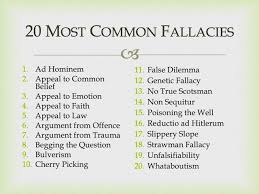Communication Fallacies
Article I choose: https://www.nytimes.com/2025/05/25/us/politics/trump-race-civil-right-white-men.html
For Trump, Civil Rights Protections Should Help White Men Administration officials pick and choose which civil rights protections they want to enforce, and for whom.
A tu quoque fallacy, or hypocrisy fallacy, emerges when the article points out that the Trump administration previously rejected the use of “disparate impact” as a legal standard, yet later relies on outcome-based statistics in the EEOC’s investigation into Harvard. This suggests that because the administration is inconsistent in its application of legal standards, its current actions are invalid or untrustworthy. While such inconsistency may be politically relevant, it does not inherently disprove the legitimacy of the new claims or investigations. This fallacy avoids evaluating the substance of the argument by attacking the character or behavior of those making it.
Finally, the article includes a false dilemma fallacy in the assertion that “civil rights, properly understood, do not pit one group against another but protect all of us.” This framing falsely presents only two choices: either civil rights protect everyone equally at all times, or the system is being misused. It ignores the reality that civil rights law often requires focusing on specific group disparities to achieve broader equality. By oversimplifying the issue into a binary choice, this fallacy erases the nuanced ways protections can be interpreted and applied to address evolving forms of discrimination.





Comments
Post a Comment